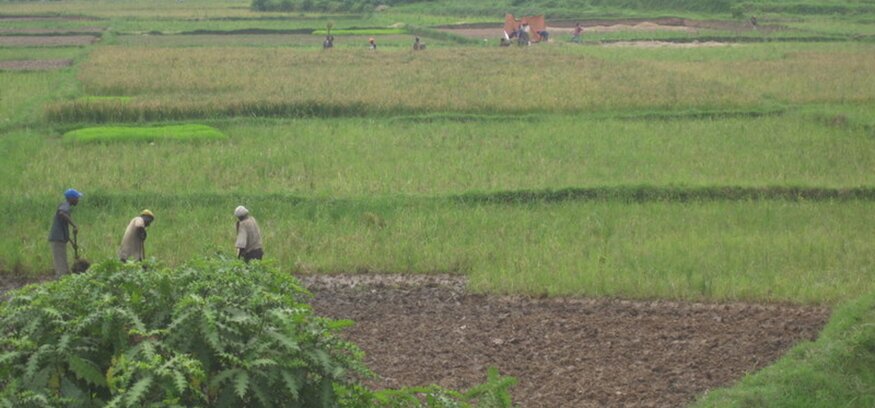The African Rice the World Forgot
 Africa Rice
Africa Rice2 December 2014
When a pair of reporters traveled to the Nigerian town of Ofada looking for its famously delicious local rice, they were surprised to find no rice at all.
Onabiyi’s mood took a downward turn when he was asked what had happened to that rare species named ‘Ofada’ rice after the name of the town. With a disturbed countenance, Onabiyi reminisced about the frustrations that drove him away from the cultivation of the rice.
“Ofada rice farming is very strenuous; it is not like planting other crops or species of rice,” he said.
“After planting the rice, it takes about two to three months before the rice can be harvested. After harvesting, the rice goes through some processes to make it edible. In fact, one has to be very careful when handling the grains because once the seeds are dispersed carelessly they begin to germinate again.”
"The cultivation of Ofada rice is very profitable but the challenges are many. I have come to believe that there is a spiritual dimension to this. Once it is time for harvesting, strange birds feast on the grains even before they are harvested."
A female farmer, who simply identified herself as Bilikisu, told Nigerian Tribune that it is sad that soon, the cultivation of Ofada rice in the town would be a thing of the past. “It is very disturbing. We can barely get any support. With the way things are going, the cultivation of Ofada rice will be a thing of the past in this community,” she said.
Nigerian Tribune 26 August 2014
How can anyone call rice – the crop that feeds half the world – a lost cause? While Asian rice cultivars have been bred into finely tuned powerhouses since the 1960s, the Green Revolution passed right over Africa’s rice and the people who grow it.
A farmer from Indonesia or China might not even recognize African rice. Many types, like Ofada, are tall plants grown on dry uplands instead of in flooded paddies. West Africa even has its own species, Oryza glaberrima, which has been adapting to the region’s dry conditions, pests and weeds for 3,500 years. These labor-intensive and low-yielding landraces may look shabby next to modern Asian rice, but any elite varieties brought over have performed abysmally in this tough environment.
African rice has been ignored for so long that most of the 240 million West Africans who rely on rice for their meals buy imported grain, at a yearly cost of $1 billion. This perpetuates food insecurity and squeezes local rice farmers even farther out of the market. But not everyone ignores the continent’s own rice diversity.
AfricaRice in Benin manages a genebank of 20,000 rice types, mostly of African origin, including Ofada. AfricaRice and its partners all over the continent use this collection to create better African varieties, two hundred of which they released between 1994 and 2000. Soon after that, AfricaRice succeeded in crossing the African species Oryza glaberrima with the Asian Oryza sativa, introducing 3,500 years’ worth of West African adaptations into the major rice species for the first time. The resulting hybrids, dubbed New Rice for Africa (NERICA), have ensured that Africa’s own rice diversity will not be a thing of the past but a thing of the future.
Photo credit: R. Raman, AfricaRice
Category: Food Security
